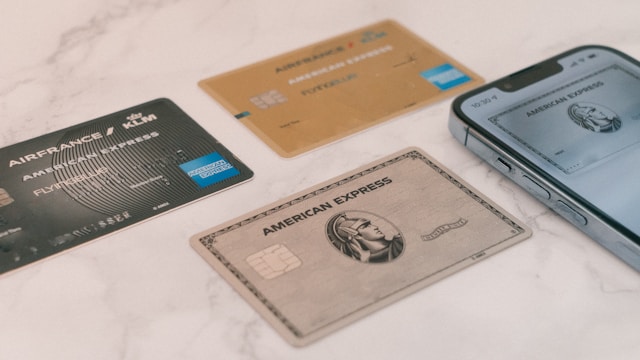Creating a blog or YouTube channel can be an exciting journey that not only allows you to express your passions but also opens up various income streams. Whether you’re interested in sharing your knowledge, entertaining others, or showcasing your creativity, this guide will walk you through the steps of starting your own blog or YouTube channel, as well as ways to monetize your efforts. Let’s dive in!
Step 1: Identify Your Niche
What Is a Niche?
A niche is a specific topic or area of interest that you will focus on. It’s essential to choose something you’re passionate about and knowledgeable in.
How to Choose Your Niche:
- Brainstorm Interests: Make a list of topics you enjoy discussing or learning about.
- Research Demand: Use tools like Google Trends or keyword research tools (like Ubersuggest) to see what people are searching for.
- Analyze Competition: Look at existing blogs or YouTube channels in your chosen area to see what works and what gaps you can fill.
- Select Your Unique Angle: Determine how you can present your content differently from others.
Step 2: Set Up Your Blog or YouTube Channel
For Blogging:
- Choose a Blogging Platform: Popular options include WordPress, Wix, and Squarespace. WordPress is highly recommended for its flexibility.
- Select a Domain Name: Choose a memorable domain name that reflects your niche. Use a domain registrar like GoDaddy or Namecheap to purchase it.
- Choose a Hosting Provider: Select a reliable hosting service like Bluehost or SiteGround to host your blog.
- Install Your Blogging Platform: If you choose WordPress, most hosting services offer a one-click installation process.
- Pick a Theme: Choose a theme that aligns with your content and brand. Customize it to make it unique to you.
For YouTube:
- Create a Google Account: If you don’t already have one, create a Google account to use YouTube.
- Set Up Your Channel: Go to YouTube, sign in, and click on your profile icon to create a new channel. Choose a name that reflects your content.
- Customize Your Channel: Add a channel banner, profile picture, and a description. Make it visually appealing and informative.
- Set Up Branding Elements: Use consistent colors, fonts, and logos across your channel to create a recognizable brand.
Step 3: Create High-Quality Content
Tips for Blogging:
- Write Engaging Posts: Focus on creating informative, engaging, and well-researched posts. Use headings, bullet points, and images to enhance readability.
- Consistency is Key: Establish a content calendar to plan your posts. Consistency builds trust and keeps readers coming back.
- Optimize for SEO: Use keywords strategically in your posts to improve visibility on search engines. Tools like Yoast SEO (for WordPress) can help.
- Promote Your Posts: Share your blog posts on social media platforms and engage with your audience.
Tips for YouTube:
- Plan Your Videos: Create a script or outline to stay organized. Focus on providing value, entertainment, or education.
- Invest in Good Equipment: While you don’t need the best gear to start, ensure you have decent audio and video quality. Consider using a smartphone, tripod, and good lighting.
- Edit Your Videos: Use editing software like Adobe Premiere Pro, Final Cut Pro, or free options like DaVinci Resolve to polish your videos.
- Optimize Video Titles and Descriptions: Use relevant keywords in your video title, description, and tags to improve searchability.
Step 4: Grow Your Audience
Building a Blogging Audience:
- Leverage Social Media: Share your posts on platforms like Instagram, Twitter, Pinterest, and Facebook to reach a broader audience.
- Network with Other Bloggers: Collaborate with others in your niche through guest posts or social media engagement.
- Engage with Your Audience: Respond to comments on your blog and social media. Building relationships encourages repeat visitors.
Growing a YouTube Audience:
- Engage with Viewers: Respond to comments, ask for feedback, and create a community feel.
- Utilize Social Media: Promote your videos on Instagram, Twitter, Facebook, and TikTok.
- Collaborate with Other YouTubers: Partnering with others can help you tap into their audiences.
Step 5: Monetize Your Blog or YouTube Channel
Once you’ve built a solid foundation and audience, it’s time to explore monetization options.
Monetizing Your Blog:
- Affiliate Marketing: Promote products or services related to your niche. Earn a commission for every sale made through your referral link. Popular programs include Amazon Associates and ShareASale.
- Display Ads: Use platforms like Google AdSense to place ads on your blog. You earn money based on impressions and clicks.
- Sponsored Posts: Collaborate with brands to create content that features their products. Ensure the products align with your niche for authenticity.
- Sell Digital Products: Create and sell eBooks, courses, or printables related to your niche.
- Memberships and Subscriptions: Offer exclusive content or perks to subscribers through platforms like Patreon.
Monetizing Your YouTube Channel:
- Ad Revenue: Once you reach 1,000 subscribers and 4,000 watch hours, you can apply for the YouTube Partner Program to earn money from ads.
- Sponsorships: Collaborate with brands for sponsored videos or product placements.
- Merchandising: Create and sell branded merchandise, like T-shirts or mugs, using platforms like Teespring or Merch by Amazon.
- Affiliate Marketing: Share affiliate links in your video descriptions to earn commissions.
- Crowdfunding: Use platforms like Patreon to get support from your fans in exchange for exclusive content.
Step 6: Analyze and Adapt
- Monitor Performance: Use analytics tools (Google Analytics for blogs and YouTube Analytics for videos) to track your performance. Analyze what content resonates best with your audience.
- Experiment and Adapt: Don’t be afraid to try new things. If a particular format or topic is performing well, create more of that content.
- Stay Updated: Trends change quickly in the digital world. Stay informed about industry trends and adapt your strategies accordingly.
Final Thoughts
Creating a blog or YouTube channel is a rewarding endeavor that requires dedication, creativity, and a willingness to learn. While it may take time to see significant income, the journey itself can be incredibly fulfilling. Focus on providing value to your audience, stay consistent, and enjoy the process of sharing your passions with the world. Remember, every big success starts with a small step, so take that leap and start creating today!



